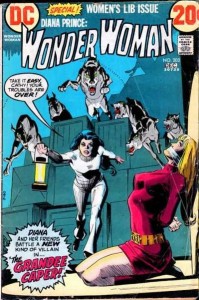 One thing I strongly urge my students to find is a good critique group, preferably one where the other writers work in the same or a related genre. A critique group can become an important part of a writer’s process, can kick you in the butt to be productive and solace you when you’re not. It gives you other people whose victories you can celebrate, and ones who will celebrate yours. It can challenge, inspire, and encourage — but it does need to be one where the members are supporting each other, and where they’re exchanging useful critiques.
One thing I strongly urge my students to find is a good critique group, preferably one where the other writers work in the same or a related genre. A critique group can become an important part of a writer’s process, can kick you in the butt to be productive and solace you when you’re not. It gives you other people whose victories you can celebrate, and ones who will celebrate yours. It can challenge, inspire, and encourage — but it does need to be one where the members are supporting each other, and where they’re exchanging useful critiques.
Sometimes people confuse the words critique and critical, and yet they are very different creatures. A good critique, one that helps and inspires the writer, may have elements that are critical of specific things, but that’s by no means everything it holds.
When you read a story for critique, it’s often good to make sure you know what the author is looking for. Authors can help the critique reader know this by including a statement that can range from, “This is very rough, so I’m looking for big picture stuff and whether the pacing works” to “This is pretty much done, and I just want to know where the language can be clearer.”
I usually begin a critique with a brief synopsis. That can be a single sentence along the lines of, “This is a story of a love story in haunted bakery,” or a longer, more complicated description. This is useful for the author because sometimes the thing the reader considers the most important about a story is not something the author actually was focusing on. You are holding up a mirror to the story and letting the author see it from a new angle.
After that, I move to the story’s strengths and the things that I want to see more of. This is a deliberate strategy because it gives the author some warm fuzzies to take them through the part where I’m a bit more critical, but it’s also one of the things that an author benefits from knowing. Often a strength can become a stellar part of a story if the author refines it even further in their rewriting.
I let the author know where things are unclear to me, where I don’t understand why a character is doing what they’re doing, or where I’m not sure of the world around them. Often these are places where I’m thrown out of the story because I’m thinking more about them than about what’s happening, and fixing them is something crucial for creating a story that is immersive and engaging, one that makes a reader forget that they’re reading and simply exist in the world of the narrative.
I often include notes on pacing, which I treat on a scene by scene basis when dealing with a story, and on a chapter level when working with a novel. Pacing is often controlled by the scene and paragraph breaks. If you doubt this, take a page of your work and first make it a single paragraph and then do a version where you strive for short paragraphs. Read the two side by side and see what a difference that makes. Sentence length will also affect pacing, as will long chunks of description.
I may talk a little about very basic structural issues, like which POV the piece is in, if I feel strongly about it. Generally, though, I don’t question things like choice of tense or voice unless there are evident advantages to trying something else that I think the author might not have considered.
 The beginning and ending of a piece matter more than other parts, and so I pay particular attention to those, and whether or not they’re effective. Often the key to fixing a wonky beginning can be found in the ending, and vice versa. Overall, I search for things that an author might make more use of, objects/characters/setting/phrases/whatever that could be repeated or dwelt on for greater effect.
The beginning and ending of a piece matter more than other parts, and so I pay particular attention to those, and whether or not they’re effective. Often the key to fixing a wonky beginning can be found in the ending, and vice versa. Overall, I search for things that an author might make more use of, objects/characters/setting/phrases/whatever that could be repeated or dwelt on for greater effect.
When offering alternate titles, I try to find something within the text, a phrase or sentence scrap that might be employed in that way. It can be surprising what excellent titles are embedded in a story and simply being overlooked.
Unless an author specifically asks for it, I do not copyedit. I do talk about patterns, along the lines of “You use a lot of adverbs and I don’t think they’re all necessary,” or “You start a lot of sentences with ‘And’ so you might want to search for that as part of your final edit.” For one thing, such copyedits can feel overwhelming when unwanted. Assume that they will do a copyedit and don’t spend a lot of time nitpicking.
Over the course of time, I have found that when most of the people in a critique group are pointing to something in a piece being broken, they are correct, but none of the fixes are the right one. Instead, I have to take the knowledge that it’s broken and go think hard about it till I figure out a solution. Accordingly, I don’t spend a lot of time proposing fixes because they usually are about how I would write the story, rather than how the author would, unless I think my idea is brilliant in which case I will be too convinced of my genius to spare the author it.
Overall, I think it’s important to be honest and kind in a critique. Value words aren’t a good idea. “The way this is structured confuses me so I don’t understand the action of the story” is valid; “This is a terrible mess” is not. A harsh critique just makes an author feel unhappy, upset, and overall unwilling to grapple with the story, which is not the point at all.
If you’re a fantasy or science fiction writer having difficulty finding a critique group, check out the Rambo Academy for Wayward Writer’s chat server.






